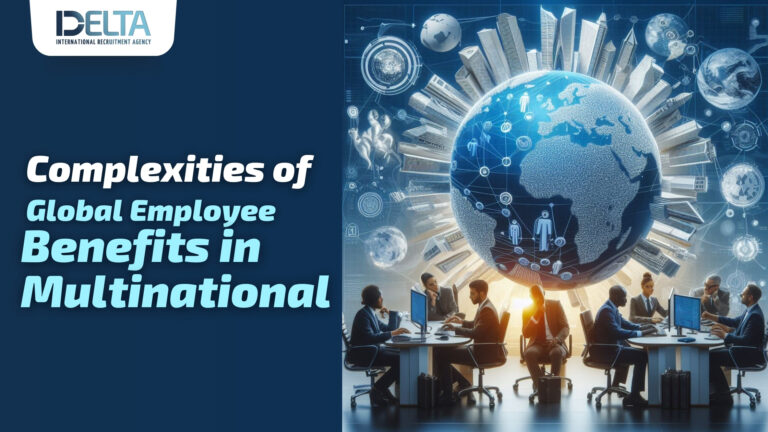Complexities surrounding global employee benefits in multinational corporations. Navigating the ever-evolving landscape of Global Employee Benefits can feel like untangling a Rubik’s cube. From navigating diverse cultural expectations to understanding complex legal and financial implications, the task can seem daunting.
But fear not, as we unravel the puzzle and shed light on the intricate world of global employee benefits, empowering you to make informed decisions that prioritize the well-being of your international workforce.
Navigating Complex Regulatory Global Employee Benefits
In the realm of global benefits administration, one of the most daunting tasks is ensuring that multinational corporations comply with the diverse legal frameworks of each jurisdiction. Navigating these complex regulatory environments is crucial to avoid legal issues and penalties. Each country presents its own unique set of laws, regulations, and compliance requirements that can significantly impact employee benefits strategies.
To effectively manage this complexity, companies must be well-versed in the varying reporting and disclosure requirements that exist across different countries. These can range from providing detailed information to employees to fulfilling government obligations, making the task of compliance a multifaceted challenge.
Additionally, leveraging technology solutions can streamline administration processes, ensure consistent communication, and provide real-time access to information for employees and HR teams. This strategic use of technology can greatly improve efficiency and accuracy in managing global benefits.
- Understand and comply with local laws and regulations.
- Familiarize with specific reporting and disclosure obligations.
- Utilize technology to enhance efficiency and communication.
Addressing Cultural Differences
One of the key considerations in effectively managing global benefits administration is understanding and adapting to the cultural nuances surrounding employee benefits. Different cultures have varying views and expectations when it comes to employee benefits, and it is crucial for multinational companies to recognize and respect these differences to foster an inclusive work environment.
To effectively address cultural differences, companies can implement two main strategies:
- Cross cultural training: Providing employees and managers with the knowledge and skills to navigate and appreciate the cultural differences in benefits administration. This training is essential for developing cultural sensitivity and ensuring that the approach to benefits administration aligns with the diverse needs of a global workforce.
- Tailoring benefits packages: Customizing benefits to align with cultural preferences and requirements. For example, offering extended maternity leave in countries where family is highly valued, or flexible work arrangements in cultures that prioritize work-life balance.
It is essential for multinational corporations to not only comply with local laws but also to integrate cultural awareness into their benefits strategy. This dual focus ensures that employee data is handled securely and in compliance with local regulations while also respecting the cultural context of each location.
Overcoming Language Barriers
In the diverse landscape of a multinational workforce,overcoming language barriers is a pivotal step towards cohesive global benefits administration. Utilizing translation services is a key strategy, ensuring that benefits documentation, policies, and communications are accessible in the native languages of employees. This not only facilitates better understanding but also empowers employees to make informed decisions about their benefits.
Cross-cultural training is another essential tool in bridging communication gaps. It equips employees with insights into varying cultural norms and communication styles, fostering an environment of mutual understanding and respect. Such training can be instrumental in enhancing collaboration across different regions.
Effective communication is the cornerstone of successful global benefits administration. It requires a strategic approach and a deep understanding of the multifaceted challenges presented by a multilingual workforce.
To further support this, companies can:
- Invest in language training for their benefits administration team.
- Encourage cross-cultural exchanges among employees.
- Leverage technology to facilitate communication across time zones.
By adopting these practices, organizations can navigate the complexities of language barriers, ensuring that all employees, regardless of their linguistic background, are well-informed and engaged with their benefits programs.
Best Practices for Multinational Corporations
Ensuring Compliance with Local Laws
To ensure compliance with local laws and regulations, multinational companies must proactively assess and align their benefits administration practices with the legal requirements of each country in which they operate. This requires a thorough understanding of the local laws and regulations governing global employee benefits administration, as well as the ability to adapt and implement localization strategies to meet these requirements.
Companies should consider the following steps to ensure compliance: Conduct a comprehensive legal assessment. Engage local legal experts. Establish clear policies and procedures. Train HR personnel on local regulations.
One of the primary challenges in this area is compliance with local regulations. Each country has its own set of tax laws, labor regulations, and reporting requirements. Partnering with a global payroll provider that has expertise in each country you operate in can also help ensure compliance and ease the burden of keeping up with local regulations.
In addition to legal compliance, companies must also focus on consistency and fairness in global employee benefits administration across different regions. This involves tailoring policies to be compatible with the organization’s structure, industry, and applicable legal regulations, while also incorporating the company’s own values, mission, and culture.
Centralizing Benefits Administration
Centralizing global employee benefits administration within multinational corporations offers a pathway to enhanced operational efficiency. By adopting a unified system, companies can achieve streamlined processes and reduced administrative costs. This centralization facilitates consistency across different regions, ensuring that all employees receive equitable treatment and access to benefits.
Key advantages of centralizing benefits administration include:
- Improved data accuracy
- Better analytics and reporting capabilities
- Simplified management of diverse benefits packages
Centralization also supports the regular evaluation and updating of benefits programs, which is essential for maintaining relevance and compliance in a dynamic global landscape.
It is imperative for organizations to work with legal advisors and consultants to align their benefits offerings with the intricate web of local regulations. A centralized platform can significantly reduce the administrative burden and ensure accuracy and consistency across regions, serving as a complete guide on PTO and how it works.
Regularly Evaluating and Updating Benefits Programs
In the dynamic landscape of global employee benefits, regular evaluation and updates are essential. Multinational corporations must stay vigilant to the shifting demands of the workforce and the evolving legal landscape. This process often involves:
- Conducting periodic reviews to assess the effectiveness of current benefits.
- Identifying areas that require enhancement or adjustment.
- Keeping abreast of global trends that may influence employee expectations.
- Aligning benefits with the strategic goals of the organization.
By centralizing benefits administration, companies gain improved data accuracy and better access to analytics, which are crucial for making informed decisions.
It is also important to consider the feedback from employees as it provides direct insight into the impact and reception of the global employee benefits offered. Utilizing tools like employee surveys and focus groups can help in gathering this valuable information. Ultimately, a proactive approach to global employee benefits management ensures that programs remain competitive and meet the needs of a diverse global workforce.
Challenges in Global Workforce Management
International Coordination and Cross-Border Integration
In the realm of global benefits administration, international coordination and cross-border integration are pivotal. Multinational corporations must navigate a labyrinth of diverse regulatory environments, each with its own set of rules and requirements. This complexity is compounded when attempting to ensure consistency and compliance across various countries.
Ensuring that employee benefits are both consistent and compliant internationally is not just a legal imperative but also a strategic one, fostering a unified corporate culture.
To address these challenges, corporations often implement a series of steps, including:
- Establishing a central team dedicated to global benefits management
- Developing standardized policies with room for local adaptation
- Leveraging technology for efficient data management and reporting
Compliance with local laws remains a cornerstone of successful international benefits coordination. Without it, companies risk legal penalties and damage to their reputation. Moreover, overcoming language barriers and cultural differences is essential, requiring tailored communication strategies and cross-cultural training.
Communication Strategies for Global Workforce
Effective communication strategies are vital for ensuring that employees understand their benefits within a multinational corporation. Clear communication is the cornerstone of successful global benefits administration, aligning benefits with the organization’s mission and values. Regular updates through various channels such as email, intranet, or dedicated benefits websites are essential.
Technology plays a crucial role in streamlining communication across borders. Utilizing software solutions can simplify the dissemination of information and facilitate better engagement. Investing in language training and cross-cultural exchange can also enhance understanding and cooperation among the global workforce.
Establishing regular communication channels and providing clear guidelines are imperative for overcoming the challenges of a diverse workforce.
Lastly, keeping abreast of technology advancements is essential. Automation and cloud-based solutions are transforming how multinational corporations manage and communicate benefits, ensuring that employees in different locations are on the same page.
Trends and Challenges in Benefits Programs
As multinational corporations expand, the trends and challenges in global benefits administration become increasingly complex. One significant trend is the growing expectation of personalized and flexible benefits packages that cater to diverse employee needs. This shift requires organizations to balance standardization with customization, often within the constraints of different regulatory environments.
Regularly evaluating and updating benefitsofferings is not just a best practice; it’s a necessity in staying ahead of these trends. Periodic reviews can pinpoint areas for improvement and adapt to the changing landscape, ensuring that benefits programs remain competitive and meet the evolving needs of a global workforce.
The key to success in global benefits administration lies in the strategic integration of technology and data analytics. These tools can enhance decision-making and streamline operations, leading to more effective management of international benefits.
Another challenge is the integration of benefits programs across multiple jurisdictions. Ensuring compliance while maintaining a cohesive strategy is a delicate balancing act that requires both local expertise and global oversight. The table below illustrates some of the key areas that need regular attention:
| Area of Focus |
Description |
|---|---|
| Compliance |
Adherence to local and international laws and regulations |
| Communication |
Effective dissemination of benefits information to a diverse workforce |
| Technology |
Leveraging platforms for efficient benefits administration |
| Data Analytics |
Utilizing metrics for informed decision-making |
In conclusion, navigating the complexities of global benefits programs demands a proactive and informed approach. By embracing innovation and fostering a culture of continuous improvement, organizations can overcome these challenges and support their international workforce effectively.
Conclusion
In conclusion, global benefits administration for multinational corporations requires a proactive and strategic approach. By conducting comprehensive research, developing a clear benefits strategy, implementing effective communication strategies, leveraging technology, ensuring compliance, centralizing benefits administration, and regularly evaluating and updating benefits programs, organizations can effectively navigate the complexities of global benefits administration and maximize the value of their offerings.
By investing time and effort into these best practices, multinational corporations can create a benefits program that not only supports employee well-being but also contributes to the overall success of the organization.
Frequently Asked Questions
How can multinational corporations address language barriers and communication challenges in global workforce management?
Multinational corporations can address language barriers and communication challenges in global workforce management by utilizing translation services to ensure accurate and effective communication.
What is the importance of international coordination and cross-border integration in global benefits administration?
International coordination and cross-border integration are crucial for organizations operating in multiple countries.
Why is it essential for multinational corporations to regularly evaluate and update their benefits programs?
It is essential for multinational corporations to regularly evaluate and update their benefits programs to stay abreast of trends and challenges, and ensure that their benefits program remains competitive and aligned with the evolving needs and expectations of their global workforce.
Tips for Employers: Complexities of Global Employee Benefits in Multinational




